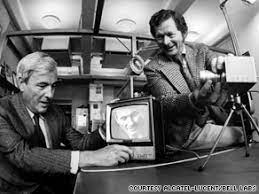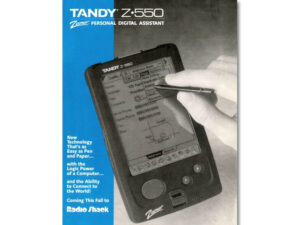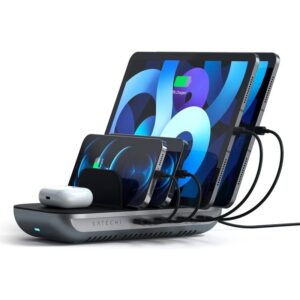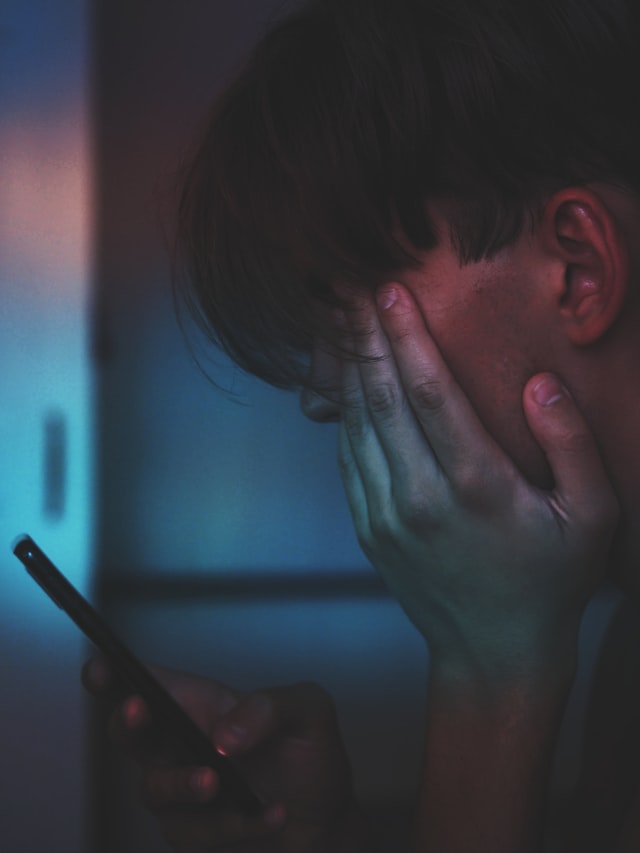If you take anything away from this quick reference guide – let it be these words:
“So far as reasonably practicable.”
Have them etched in your mind because this is what is being asked of you.
DSE regulations have a “reasonably practicable” regulatory solution for most visual repetitive stress injuries.
The evolution

The regulations for Display Screen Equipment have been evolving for decades.
As you read through this document, you’ll see how they’ve evolved to encompass all aspects of working with DSE, from the chair to the mental health of the operative.
1974

They began back in 1974 with the Health & Safety at Work Act legislation still current to this day.
The aim of the Health and Safety at Work Act is so that we all know and understand what health and safety measures are needed in our workplaces, where we can find the information for them, and that they have been implemented so far as is reasonably practicable.’
This phrase is not a get out of free jail card – this is a – you need to look and see what needs implementing, and do it as far as is reasonably practicable.
Please note we have provided examples of checklists for each regulation where possible.
Example of 1974 Health and Safety checklist>>> https://www.londonofficespace.com/healthsafetychecklist.html
1992

- Starting in earnest in 1992 as the digital age begins to take off –
We have The Health and Safety (Display Screen Equipment) Regulations 1992
This regulation is the benchmark for evaluating the workplace for any health and safety risks for display screen users – BUT – as this was the start of the digital age, they didn’t focus too much on the screen – it was more about the office environment and the ergonomics.
The emphasis was on assessing and evaluating the workplace.
The main points are:
- Analysis and requirement of workstation
· Daily work routine – a bit Shakespearian in writing, but here’s a sample – 4. “Every employer shall so plan the activities of users at work in his undertaking that their daily work on display screen equipment is periodically interrupted by such breaks or changes of activity as reduce their workload at that equipment“.
· If you work with DSE, you are entitled to regular eye tests and equipment needed to ensure your vision is cared for.
· The checklist for this regulation >>> https://www.hse.gov.uk/pubns/ck1.htm
1998

Six years later and new realisations are emerging. Tech is becoming better; digital is more and more in our daily lives, the office chair and desk are regulated – so now we have the
1998 PUWER Act ( created initially in 1992, updated in 1998, with minor updates in 2021 to reflect that the UK is no longer part of the EU)
These regs move from the workplace environment – office desk and chair etc. to the equipment – asking the questions:
>>>>>>>>> is it suitable, how is it used, and have they been trained? <<<<<<<<<<
From the regulations themselves:
“The use of work equipment is also very widely interpreted and ‘…means any activity involving work equipment and includes starting, stopping, programming, setting, transporting, repairing, modifying, maintaining, servicing and cleaning”.
The 1998 PUWER requires risks to people’s health and safety from equipment they use at work to be prevented or controlled. … safe for use, maintained in a safe condition; “used only by people who have received adequate information, instruction, and training”.
This act is trying to prevent injuries and mishaps.
A brief overview:
- Selection and conformity of work equipment
- Maintenance and inspection of work equipment.
- Training and competence.
An example of a PUWER checklist >>> https://datascope.io/en/template/manufacturing/work-equipment-assessment-puwer?id=167581
2007

Nine years later, we are into the new millennium, and being faithful tech people, we are looking at DATA, and the impacts that working with DSE have on our bodies.
HSE RR561 2007 landmark Study – Think: Presenteeism, carrying-on regardless of visual stress, MSD’s and repetitive physical stress injuries MSK’s/
The opening paragraph tells us most of what we need to know about this study:
A variety of ill health symptoms have been associated with work with Display Screen Equipment (DSE), including musculoskeletal disorders, mental stress, and visual fatigue.
The survey found high prevalences in DSE users of self reported symptoms, eg.
headaches (52%),
eye discomfort (58%), and
neck pain (47%);
other symptoms such as back (37%)
and shoulder (39%) pain were also frequently reported.
>>>>>>. Most of those reporting symptoms did not take any time off work. <<<<<<<<<<
All symptoms were more common among respondents who had indications of stress, anxiety and/or depression.
It’s important to note that this is 15 years after the introduction of DSE regs in 1992, and they quite rightly point out:
“However, there are substantial uncertainties, not least over the extent to which the provisions of the legislation have been fully implemented, and it cannot be safely concluded that the legislation has had no effect.”
Has there been an update to this?
Not that we have been able to find, but then we have just been living through 2020/2021, so we are sure there will be an update due to screen fatigue and zoom fatigue now being endemic.
2016

Why would we include a list of eye problems in a regulatory quick reference guide?
Especially when this particular ICD-10 list of eye diseases is the basis for identifying the severity of illness in the USA and used by eye hospitals for billing purposes (depending on specific conditions covered by insurance or not).
We’ve included it as a pause, a time to reflect, and ask the question:
How long before this list is used in the UK? Particularly if a DSE operator recognises that their eyesight has deteriorated because their employer has not been implementing the DSE regs?
2017

This year saw the release of a DSE Safety Alert as it was noted “ There is evidence of non-compliance in the area of Display Screen Equipment (DSE) assessment as required by current legislation. The purpose of this Safety Alert is to highlight the importance of ensuring all workstations are assessed.”
2018

So, by now, we realise that sitting in a chair all day, staring at a screen, is not great for the body, mind or soul, there is a vast list of injuries used by the USA insurance companies, a safety alert has been raised by Health and Safety England, so we need to start looking at limits.
Not easy with working from home becoming more popular, but we become tired, and when fatigued, we make mistakes, which can be costly.
2018 ISO 45001 “Work Exposure Limits.”
ISO 45001 is the world’s international standard for occupational health and safety.
It was issued to protect employees and visitors from work-related accidents and diseases.
As a result, ISO 45001 is concerned with mitigating any factors that are harmful or that pose a danger to workers’ physical and/or mental wellbeing.
We’ve moved from assessing risks to doing our best to prevent them.
The main points from this regulation – taken from the BSI website:
- Increase organisational resilience through proactive risk prevention, innovation and continual improvement
- Strengthening of legal and regulatory compliance whilst reducing business losses
- Demonstrates brand responsibility by committing to safe, healthy and sustainable work
- One global occupational health and safety system for all businesses of all sizes.
An example of the ISO 45001 checklist >>> https://www.qmsuk.com/iso-standards/iso-45001/iso-45001-audit-checklist
Also, in 2018 we have the arrival of WCAG 2.1
Web Content Accessibility Guidelines (WCAG) 2.1 covers a wide range of recommendations for making Web content more accessible.
The website states:
“Following these guidelines ensures content is more accessible to a wider range of people with disabilities, including accommodations for blindness and low vision, deafness and hearing loss, limited movement, speech disabilities, photosensitivity, and combinations of these, and some accommodation for learning disabilities and cognitive limitations.”
They also clearly state:
Following these guidelines will also often make Web content more usable to users in general.
Bullet points:
- Ensuring non-text is available in text
- Assistive technology
- Human language
An example of the WCAG 2.1 checklist >>>>https://webaim.org/standards/wcag/checklist
2019

Welcomes ISO 30071.1, which takes WCAG a step further, is the evolution of British Standard 8878 and focuses more on user experience and the more personalised approach, emphasising accessibility.
This ISO applies to all types of organisations. It applies to the breadth of ICT systems (Information and Communications Technology) within an organisation, including, but not limited to: information systems; intranet systems; websites; mobile and wearable applications; social media; and Internet of Things (IoT) systems.
Giving requirements and recommendations for organisations such as:
- Ensuring accessibility is considered in their policies or strategy by creating an organisational ICT accessibility policy.
- Embedding the consideration of accessibility decisions through the entire process of developing, procuring, installing, operating and maintaining ICT systems, and documenting these choices.
- Communicating the ICT system’s accessibility decisions to its users at launch through creating and publishing its “Accessibility Statement”.
2021

ISO 45003 – Finally, we arrive at the mental health aspects of DSE regulations.
Remember how the 2007 Data showed people carrying on regardless of illness, injury and poor mental health? Well, this set of regulations attempts to redress this.
Occupational health and safety management “Psychological health and safety at work – Guidelines for managing psychosocial risks guide psychological health and safety risks within an occupational health and safety management system.
This ISO addresses the many areas that can impact a worker’s psychological health, including ineffective communication, excessive pressure ( our note: not taking a lunch break, poor lighting, working late – staring at a screen that has not been calibrated for the user – i.e. straight out of the box – for over 9 hours a day), poor leadership and organisational culture.
And here is where we want to take another pause and think more about Exposure Control.
We usually consider exposure control is required for chemicals or toxic substances. Still, here we are referring to exposure to visual health stressors – and yes – high on the list is the display screen, including the hours and hours we all spend looking at one – be that pc – phone or TV.
Overexposure to DSE presents as dry-eye syndrome and binocular visual disturbances (WHO ICD-10), debilitating myopic and asthenopic (eye stress) disease. This often presents as deficits in spatial awareness and blurred, or worse double vision, impairing learning and educational/work performance.
Tying this all together.
You should now see the evolution from thinking about the desk and the chair to the actual human experience working with DSE in the chair.
We know that the office environment needs to be optimal, and risks mitigated.
We know that frequent breaks are required, overexposure leads to physical and mental harm, and we know we need to take care of our most valuable asset – the employee.
And you can do that by personalising their DSE.
The DSO creates the optimal, personal coloured background for the DSE user, mitigating the harms of overexposure and the disease associated with that, reducing stress, and having them shows compliance with the DSE regulations in that reasonably practical way.
Looking after your employees’ wellbeing isn’t a chore; it’s a privilege, and if you do it well, everybody and the company flourishes.
Congratulations if you made it this far!
You probably now know more than most regarding DSE regulations
A brief note about colour contrast validation.
Poor colour contrast has a cascade effect that few people are aware of.
This is what happens:
- The colour contrast affects your eyes.
- Which affects the stamina of your visual systems and brain.
- Which negatively affects your capacity to sustain concentration levels.
- Which in turn, affects your levels of cognitive fatigue, efficiency and productivity.
Processing (understanding) visual information uses energy. For example, if you work harder to process visual information because certain colour combinations cause you pain or discomfort, you use up more energy, become fatigued and therefore less efficient and productive.
- You are also prone to increased error rates and making simple mistakes.
- Poor Colour contrast is also visually uncomfortable. It affects the eye-muscle stamina in sustaining binocular/stereoscopic vision close up, and can contribute to early-onset eye strain.
What is colour contrast?
The term refers to the tone, contrast colours, brightness of the background and amount of text and images on a webpage or website, (now regulated by WCAG).
The most basic colour contrast (out of the box setting), is black text on a bright white background. This is considered very high contrast and should be avoided.
But more and more, people are noticing that colours and colour contrast can either enhance or detract from our well-being due to the amount of visual stress it causes.
Bright colours can grab our attention, but they can also cause pain.
Finding the correct colour contrast can enhance access to text.
And if you are a DSE operator, you want your eyes to work well, you want to be alert, you want to avoid pain, and you want to be as productive as you can be.
If you are in HR, you want these for your staff.
This is why the DSO should be on your DSE
regulation and wellbeing checklist:
- Does everyone know where the health and safety manuals are? ✅
- Chair, pc and table and office lighting assessed? ✅
- Necessary training has been given/undertaken? ✅
- Have work exposure limits been set? ✅
- PC has had personalised adjustments for the individual user? ✅
- DSO installed on company computers? ✅
- Employee is aware of psychological and wellbeing services? ✅
Download our DSE Regulations Reference Guide here
 Text
Text 


